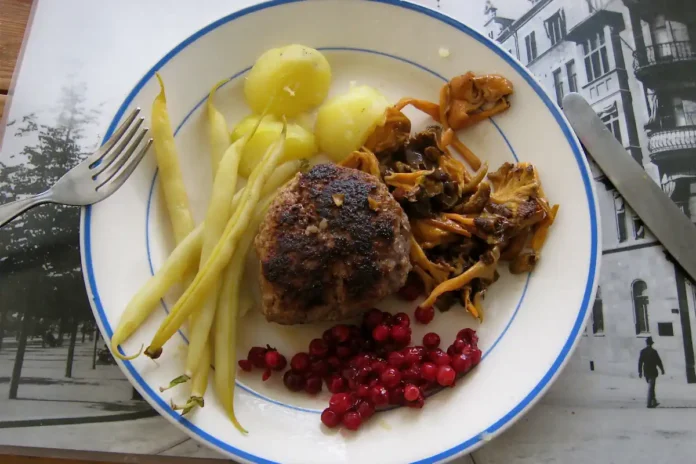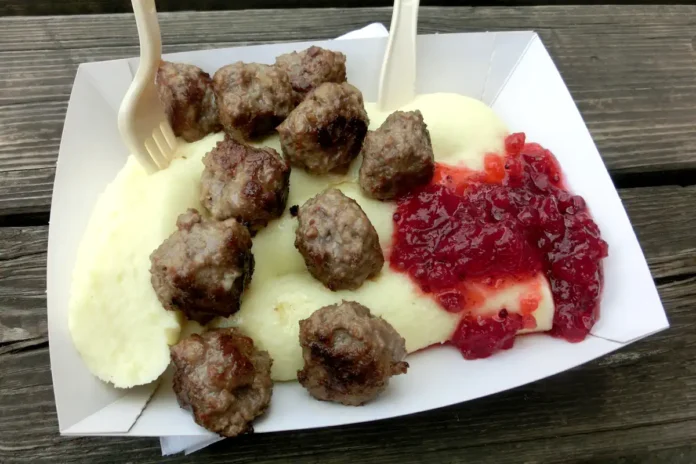Lingonberries—lingon in Swedish—are a defining feature of Swedish cuisine, culture, and landscape. For tourists visiting Sweden and Stockholm, understanding the story of lingon offers a unique window into the country’s natural bounty and culinary traditions.
What are lingonberries?
Lingonberries (Vaccinium vitis-idaea) are small, bright red berries that grow on low, evergreen shrubs throughout Sweden’s forests and moorlands. They thrive in the cool, acidic soils of the boreal forests and Arctic tundra, ripening late in the summer, typically in August and September. The plant is extremely hardy, surviving harsh winters and poor soils, and is found across the Nordic region, as well as in North America and Eurasia.
Cultural history and symbolism
Lingonberries have deep roots in Swedish folklore and daily life. In old tales, they symbolize resilience and the enduring bond between people and the land, reflecting their ability to thrive in tough climates. Due to their high benzoic acid content, people prized lingonberries for their natural preservative qualities before the advent of cheap sugar. Swedes would conserve them as vattlingon—simply covered in water—to last through the winter.
The right to pick wild berries, including lingon, is protected by Sweden’s Allemansrätten (Everyman’s Right), allowing everyone to roam and forage in the forests, a tradition that remains vibrant today.
Where and how they grow
Lingonberries grow wild, especially under forest canopies on dry, acidic, and low-nutrient soils. They are most abundant in Sweden’s vast forests but can also be found in mountainous and tundra regions.
Typically, people pick the berries with a special tool known as a “scrabbler,” which efficiently strips them from the bush.
How lingonberries are consumed
Lingonberries are a culinary staple in Sweden, appearing in both traditional and modern dishes:
- Lingonberry jam: The most common preparation, made by mixing berries with sugar (sometimes without cooking, known as rårörda lingon or “stirred lingonberries”). The jam’s tartness balances rich or savory foods.
- The classic pairings of lingonberry jam include Swedish meatballs, potato pancakes (raggmunk), blood pudding (blodpudding), liver dishes, and fried herring. It also accompanies mashed potatoes, porridge, and desserts.
- Drinks and sweets: Lingonberries are used to make juices, syrups, and even schnapps. In the past, lingonberry water (vattlingon) was a home remedy for scurvy and a traditional drink.
- Holiday traditions: Christmas dishes and decorations feature lingonberries because of the plant’s evergreen leaves.
- Modern cuisine: Today, lingonberries appear in creative desserts, sauces, and even cocktails in Stockholm’s restaurants.
Nutritional and health benefits
Lingonberries are rich in antioxidants, vitamins, and minerals. They have traditionally been used in folk medicine for their antiseptic properties and to treat urinary tract disorders, much like cranberries. Modern research highlights their potential benefits for heart health and digestion.
Where to experience lingon in Sweden and Stockholm
- Restaurants: Nearly every traditional Swedish restaurant in Stockholm will serve dishes with lingonberry jam, especially with meatballs.
- Markets: Lingonberry products—jams, juices, and dried berries—are widely available in supermarkets and food halls.
- Cafés and Bakeries: Try lingonberry pastries or pancakes topped with the tart jam.
- Nature Reserves: If visiting Sweden in late summer, join locals in foraging for wild lingonberries in the forests, experiencing Allemansrätten firsthand.
In summary
Lingonberries are more than just a berry in Sweden—they are a symbol of the country’s natural abundance, cultural resilience, and culinary creativity. Whether enjoyed as a sweet-tart jam alongside meatballs in Stockholm or spotted growing wild in the forests, lingon offers a taste of Swedish tradition and the enduring spirit of the north.




